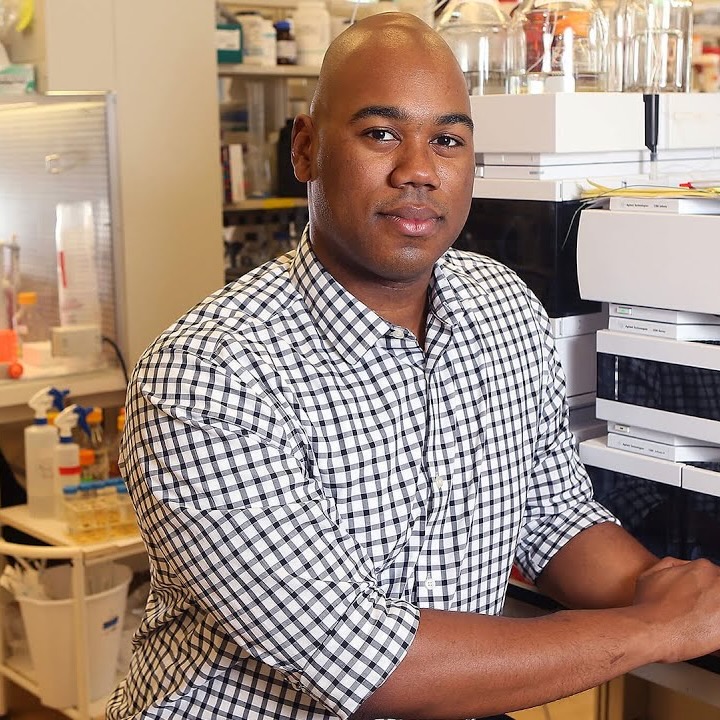Since coming to Purdue in 2016, Dr. Solomon has helped found the Diversity Ambassadors initiative, which helps bridge connections between Purdue and historically black colleges and universities. This initiative is funded by a $100,000 grant over two years from Perdue.

Kevin Solomon, Ph.D.
Assistant Professor of Agricultural and Biological Engineering (Purdue University)
Dr. Solomon grew up in Canada, and earned his undergraduate degree from McMaster University in Ontario. He went on to a master’s degree and then a Ph.D. at MIT in Chemical Engineering, working to develop methods for harnessing E. coli to produce non-natural compounds. He went on to postdoctoral research at UC Santa Barbara, and then to a faculty position at Purdue in 2016.
Dry plant matter represents the largest source of biofuels, which have the potential to reduce our dependence on fossil fuels. However, plant cells are surrounded by cell walls, which contain a compound called lignin. Lignin is very sturdy, which is important for the plant — but that sturdiness becomes a problem when it comes to breaking down plants for fuel. Biofuels are produced by fermentation of simple sugars by bacteria or yeast, but those sugars are tightly bound to lignin. Thus, traditional biofuel production has included a separation step, which is expensive, time-consuming, and somewhat toxic.
It has been suggested that microbes found in the guts of herbivores (e.g., cows) are a good place to look for new tools for biofuel production: the bacteria and fungi in the gut help to break down plant matter. In a recent paper, Dr. Solomon and his postdoctoral advisor looked at two fungi isolated from herbivore feces for their potential to be used in biofuel production. They grew these fungi on plant matter, and measured which metabolites were produced. They found that there was enough glucose (sugar) freed up (but not consumed) by these two fungi to support growth of baker’s yeast (S. cerevisiae).
This has important potential for further development of biofuel production because, unlike the two gut fungi, we know a lot about S. cerevisiae and have many existing tools for genetic engineering in that system. Thus, the authors propose to use the two gut fungi to break down the lignin and then S. cerevisiae for fermentation and isolation of fuel.